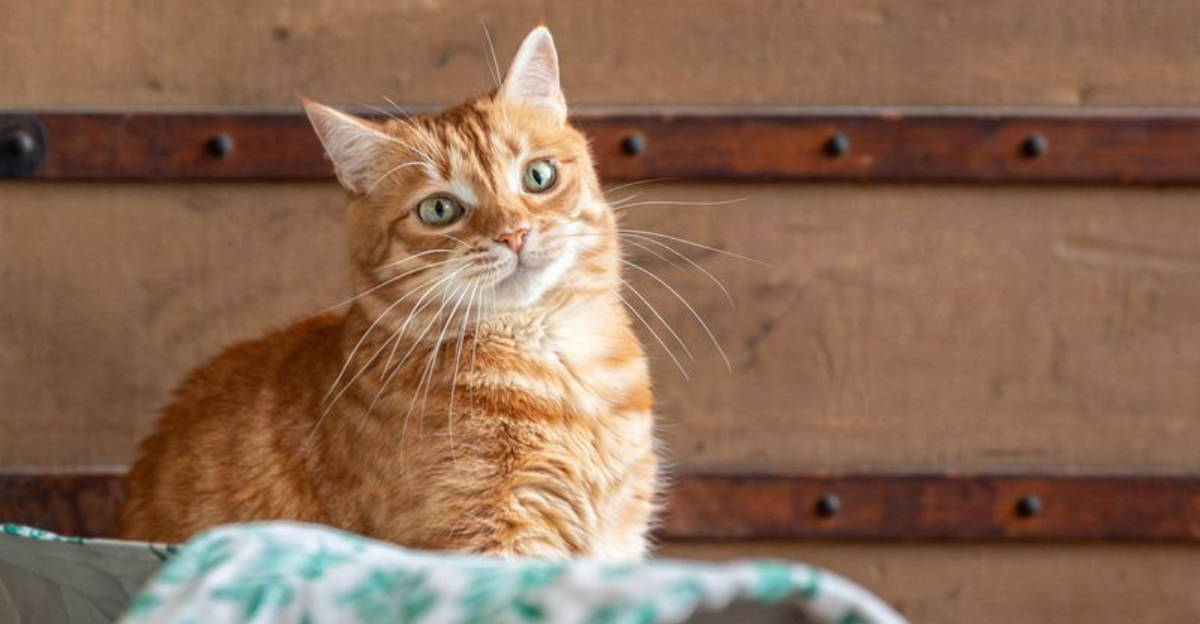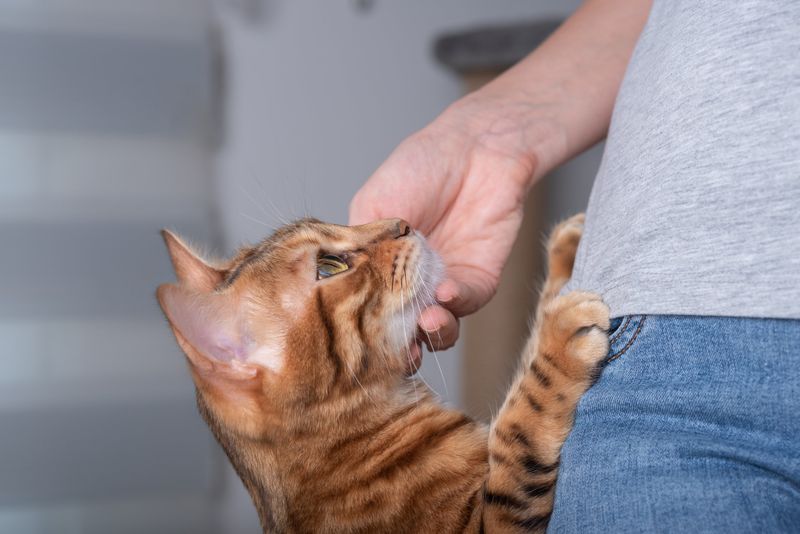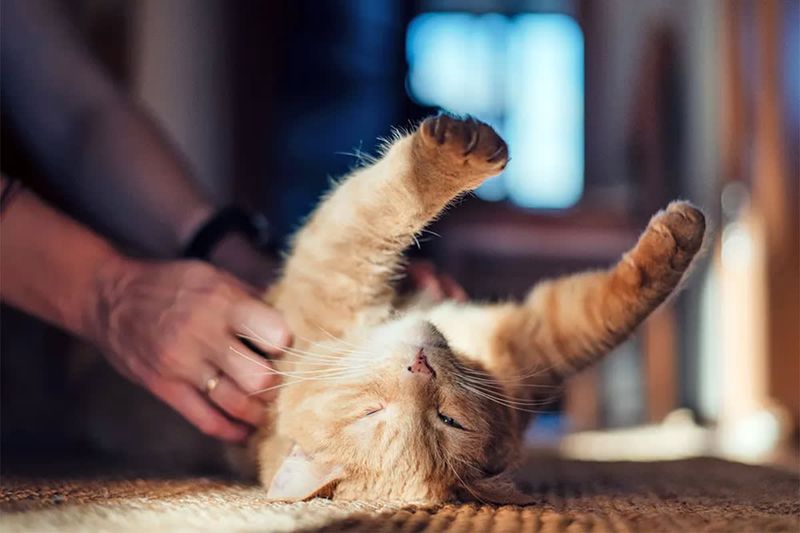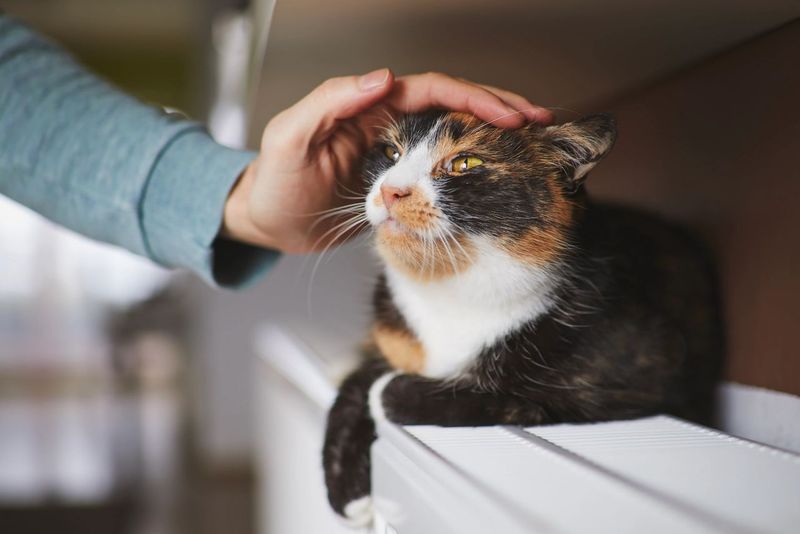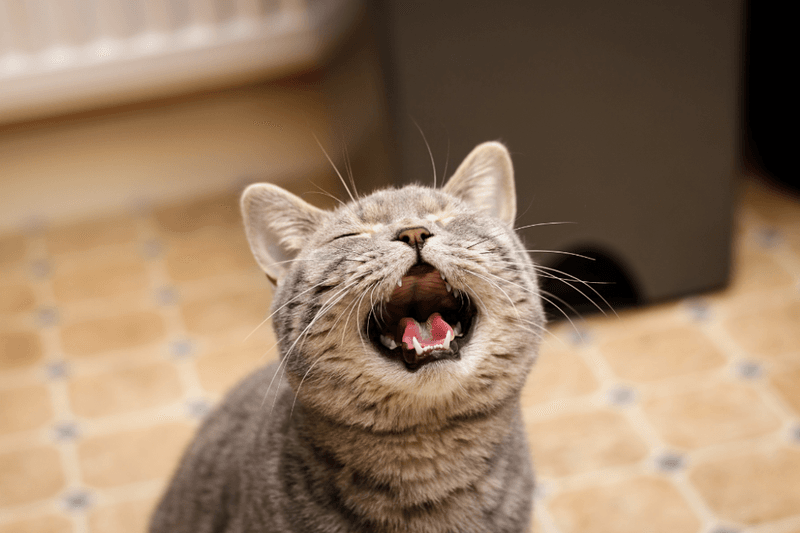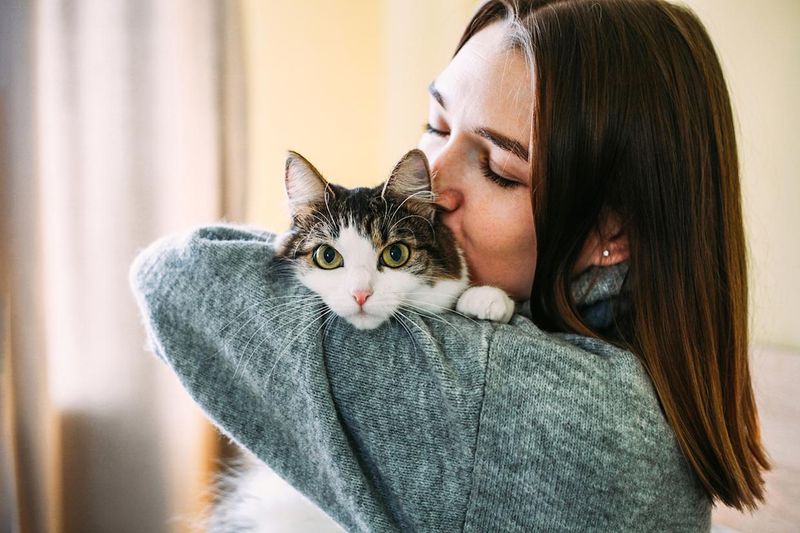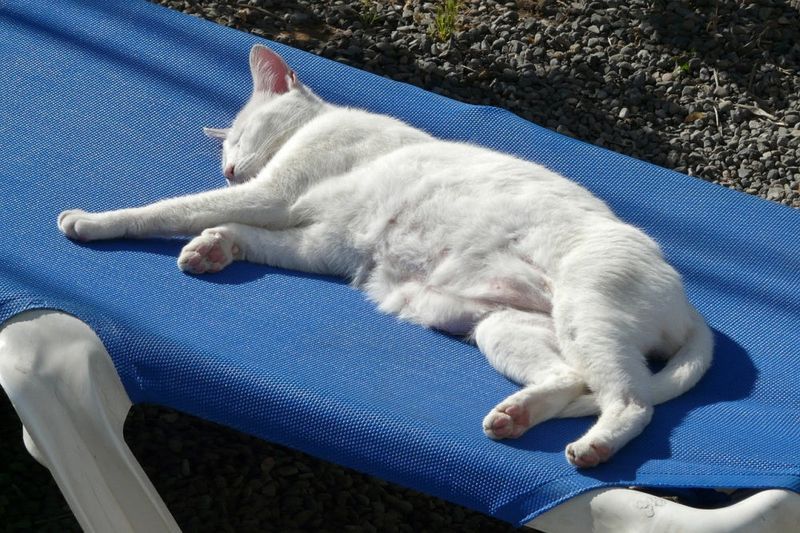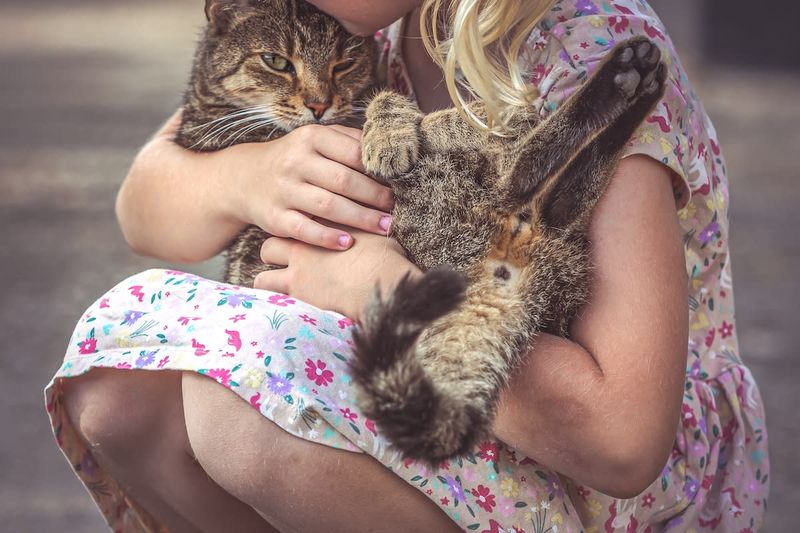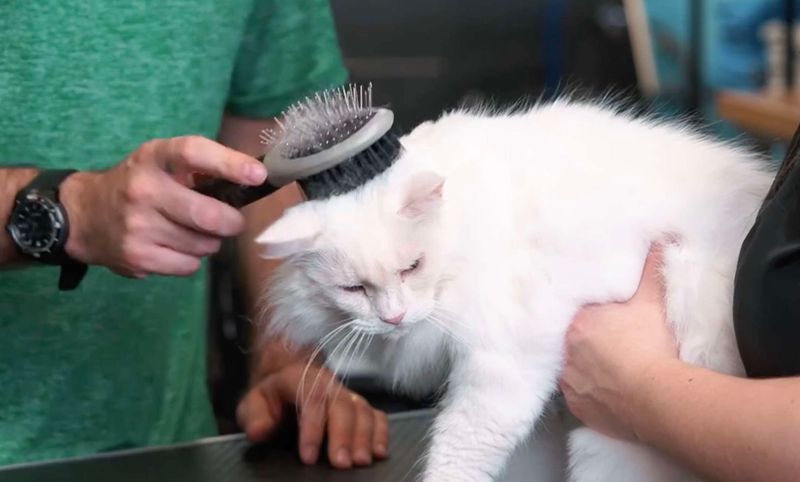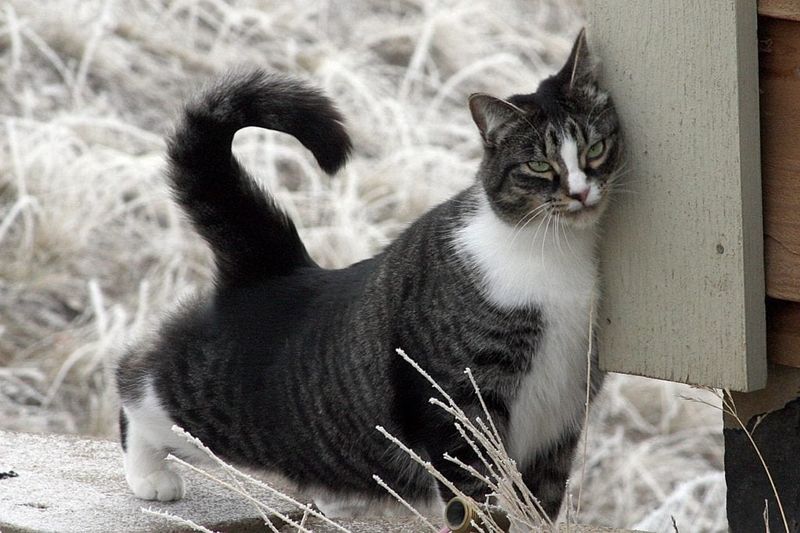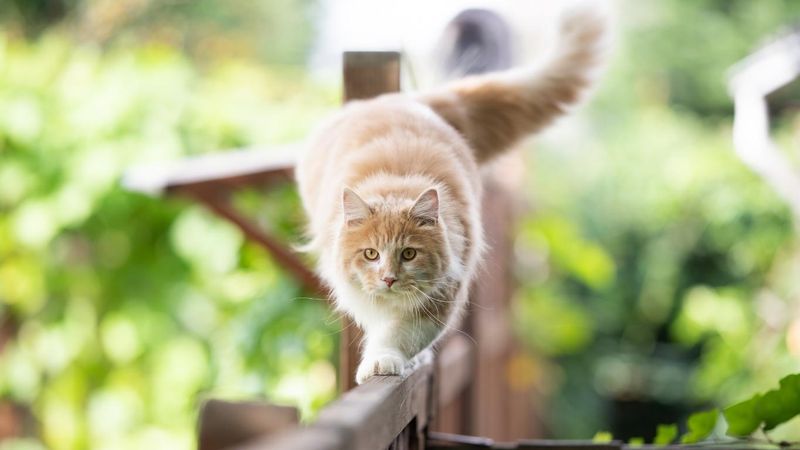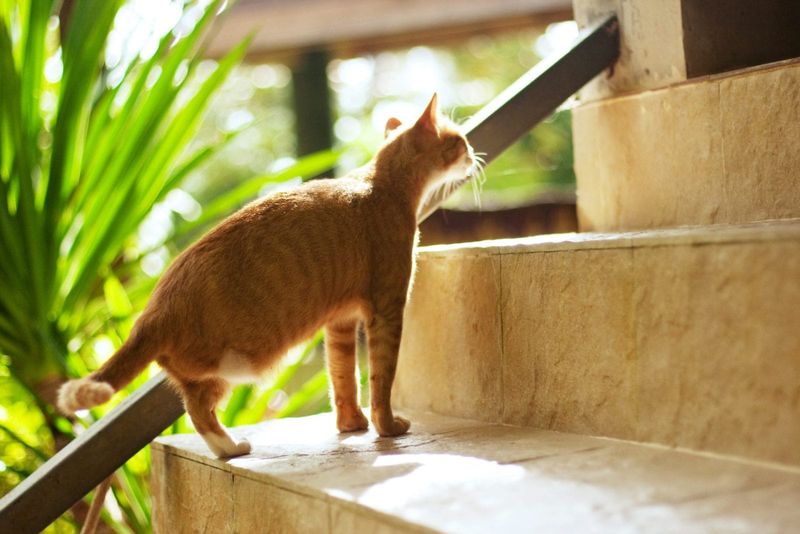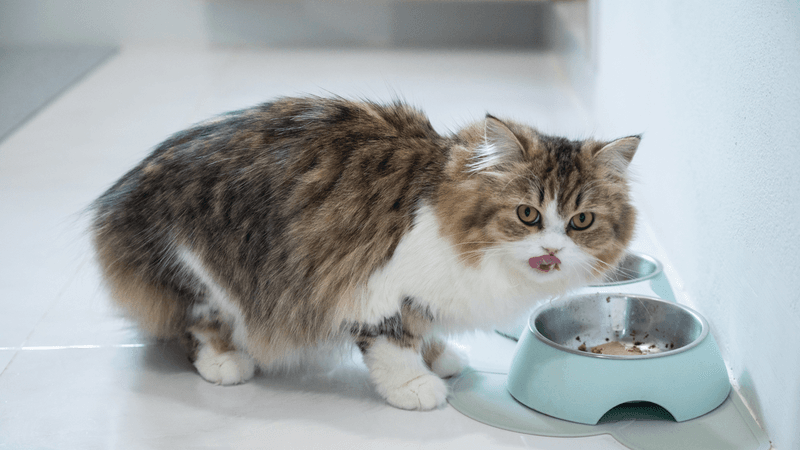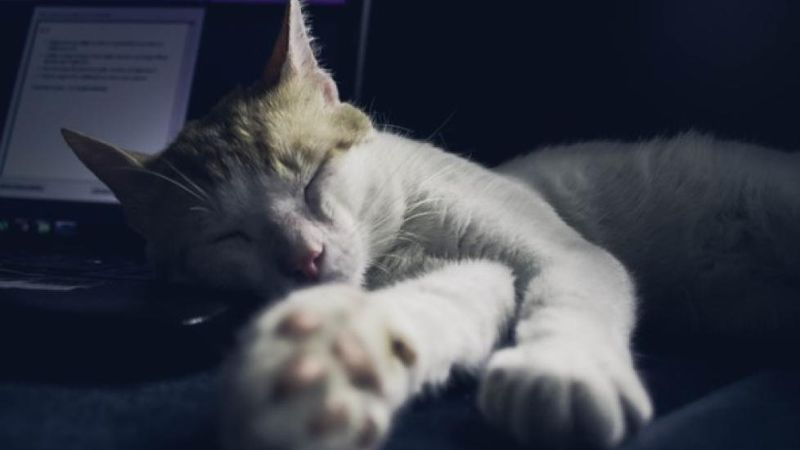📖 Table of Content:
- 1. Maintaining Eye Contact
- 2. Seeking Higher Ground
- 3. Exposing Their Belly
- 4. Kneading Behavior Returns
- 5. Decreased Startle Response
- 6. Playful Behavior Emerges
- 7. Vocal Communication Increases
- 8. Greeting Rituals Develop
- 9. Sleeping Positions Relax
- 10. Seeking Physical Contact
- 11. Grooming in Your Presence
- 12. Claiming Territory Through Scent
- 13. Approaching Visitors
- 14. Displaying Personal Preferences
- 15. Curiosity About New Objects
- 16. Accepting Schedule Changes
- 17. Reduced Food Aggression
- 18. Synchronized Sleep Schedules
Welcoming a rescue cat into a home marks the beginning of a delicate emotional journey. Many arrive carrying invisible burdens from past hardships, shaped by fear or neglect. Their responses may be quiet, cautious, or even withdrawn in the early days.
As time passes, small shifts in behavior can reveal the cat’s growing sense of safety. A soft gaze, a slow blink, or choosing to rest nearby can all speak volumes. These subtle gestures often go unnoticed but are powerful indicators of emotional progress.
Recognizing these quiet signs of trust builds a foundation for a deeper connection. Each moment of openness reflects a step forward in the healing process. With consistency and care, rescue cats begin to rediscover comfort, confidence, and the courage to connect.
1. Maintaining Eye Contact
Previously fearful rescue cats avoid looking directly at humans as a self-protective measure. When your cat begins holding eye contact for longer periods, they’re demonstrating newfound trust. This vulnerable connection indicates they no longer view you as a threat.
Many rescued felines will even add a slow blink – known as a ‘cat kiss’ – during these moments. This gesture signifies deep comfort in your presence.
Watch for these eye contact sessions gradually increasing in duration. Your formerly skittish companion is essentially saying, “I feel safe enough to let my guard down around you.”
2. Seeking Higher Ground
Cats naturally gravitate toward elevated perches when they feel secure in their environment. A rescue that begins claiming bookshelves, refrigerator tops, or cat trees is showing territorial confidence. This vertical exploration demonstrates they’re mapping their new kingdom.
Fearful cats typically hide under furniture, not on top of it. The shift from low hiding spots to high vantage points signals growing emotional strength and environmental ownership.
Notice how your cat surveys the room from these heights with relaxed body language rather than tense vigilance. They’re no longer constantly scanning for threats but enjoying their domain.
3. Exposing Their Belly
Rolling over to expose a vulnerable belly represents one of the strongest trust signals in feline body language. When your rescue cat begins showing this behavior, they’re communicating profound emotional progress.
The belly houses vital organs and represents a defensive weak spot. A cat must feel genuinely safe to willingly expose this area, especially given potential past traumas.
Not all belly displays are invitations for tummy rubs—sometimes it’s purely a trust demonstration. Respect their boundaries while appreciating this powerful sign that they no longer feel the need to remain constantly guarded around you.
4. Kneading Behavior Returns
That rhythmic paw-pressing motion known as “making biscuits” connects directly to kittenhood comfort. When rescue cats resume kneading, they’re accessing early nurturing memories and applying them to their new situation.
Many traumatized cats temporarily lose this instinctual behavior during stressful periods. The return of kneading signals they’ve rediscovered their capacity for contentment and pleasure.
Pay attention to where they choose to knead—your lap, a favorite blanket, or their bed. These locations represent their new safe spaces. The deeper and more relaxed the kneading becomes, the more emotionally settled your cat feels.
5. Decreased Startle Response
Healing rescue cats gradually develop a higher threshold for unexpected stimuli. The sudden movements or noises that once sent them bolting for cover now barely interrupt their grooming session. This decreased startle response indicates their nervous system is regulating.
Trauma creates hypervigilance, keeping cats perpetually on edge. As they heal, their bodies learn that not everything represents danger, allowing them to conserve energy previously spent on constant alertness.
You’ll notice this improvement when everyday household sounds—the dishwasher, doorbell, or television—no longer trigger panic. Their ability to distinguish between genuine threats and normal environmental noise marks significant emotional progress.
6. Playful Behavior Emerges
The appearance of genuine play signals that your rescue cat’s inner kitten is awakening from emotional hibernation. When cats feel threatened or insecure, play is one of the first behaviors they sacrifice. Its return marks a significant healing milestone.
Early play attempts might be brief or hesitant. Your formerly withdrawn companion might bat at a toy for just seconds before retreating. Each playful engagement stretches their comfort zone.
Look for increasing play duration and intensity over time. The transformation from cautious paw taps to full-body pounces, side rolls, and playful chasing demonstrates they’re reclaiming their right to experience joy and frivolity.
7. Vocal Communication Increases
Silent cats often become conversationalists as they heal emotionally. That emerging symphony of chirps, trills, meows, and purrs indicates your rescue feline feels comfortable expressing needs and opinions.
Traumatized cats frequently suppress vocalizations to avoid attracting unwanted attention. As security grows, they rediscover their voice as a communication tool rather than a risk factor.
Each vocalization type carries meaning—from the greeting trill when you enter a room to the persistent meow requesting dinner. This developing feline vocabulary demonstrates they’ve accepted you as a responsive caregiver worth communicating with, not someone to hide from.
8. Greeting Rituals Develop
The establishment of consistent greeting behaviors signals that your rescue cat now views you as a reliable, positive presence. Coming to the door when you arrive home demonstrates that they recognize and welcome your return rather than hiding from a potential threat.
These rituals might include running to meet you, specific vocalizations, or rubbing against your legs. Each cat develops their unique welcome ceremony based on their personality and comfort level.
The enthusiasm behind these greetings often increases with emotional healing. What begins as cautious acknowledgment evolves into genuinely excited welcomes, showing they’ve connected your presence with positive experiences rather than uncertainty or fear.
9. Sleeping Positions Relax
Defensive sleeping postures gradually transform into vulnerable relaxation as emotional healing progresses. Newly rescued cats often sleep in tight balls with limbs tucked protectively underneath, ready to flee at a moment’s notice.
Healing brings sprawled positions, exposed bellies, and deep sleep cycles. Your cat stretching out completely or sleeping on their back signals they no longer feel the need to protect vital areas.
Watch for increased REM sleep with twitching whiskers, paws, and eyelids. These deeper sleep states require feeling genuinely safe, as cats in survival mode deny themselves complete rest. The sight of your rescue cat snoring softly with limbs akimbo represents profound trust.
10. Seeking Physical Contact
Touch-averse rescue cats undergo remarkable transformations when emotional healing takes root. The feline who once fled from approaching hands might suddenly hop into your lap or nudge your hand for pets.
This journey toward physical connection often begins with brief moments of permitted contact. Five seconds of tolerated petting gradually extends to longer sessions, eventually becoming actively solicited affection.
Respect that progress isn’t always linear. Your cat might seek cuddles one day and need space the next. However, the overall trajectory toward increased physical contact demonstrates growing security in the relationship and confidence that touch now brings comfort rather than harm.
11. Grooming in Your Presence
Cats reserve thorough grooming sessions for environments where they feel completely secure. When your rescue begins cleaning those hard-to-reach spots while you’re nearby, they’re demonstrating newfound comfort in your presence.
Grooming requires focused attention that temporarily reduces environmental awareness. A cat must trust you won’t take advantage of this vulnerable state.
The progression from quick, nervous cleaning to leisurely bathing sessions marks significant emotional healing. Extended grooming with leg raises, contorted positions, and half-closed eyes shows they’ve categorized you as a non-threat—someone they can be completely unselfconscious around.
12. Claiming Territory Through Scent
Face rubbing against furniture corners, doorways, and your legs signals your rescue cat is actively claiming territory through scent marking. This proprietary behavior indicates they’ve accepted this space as their permanent home, not a temporary shelter.
Cats possess scent glands in their cheeks, paws, and flanks. When they rub these areas against objects—or you—they’re depositing personal pheromones that create a comforting olfactory map.
The expanding radius of these scent-marking behaviors reveals growing confidence. A cat who initially only marked one safe corner might eventually claim the entire house, demonstrating they no longer feel the need to maintain escape routes or hiding spots.
13. Approaching Visitors
Social confidence toward strangers represents a profound healing milestone for many rescue cats. The transformation from hiding during visits to cautious observation and eventually social interaction demonstrates expanding emotional capacity.
Most rescued felines initially view unfamiliar humans as potential threats. Watching your cat progress from complete avoidance to curious assessment from a distance signals growing security in their environment.
The truly remarkable moment comes when your formerly fearful companion voluntarily approaches a visitor for investigation or even affection. This behavior indicates they’ve generalized the positive human experiences with you to other potential friends—a sophisticated emotional development.
14. Displaying Personal Preferences
Developing and expressing clear preferences demonstrates your rescue cat has moved beyond survival mode into self-actualization. From favorite napping spots to toy preferences, these choices reveal their authentic personality emerging from behind protective walls.
Traumatized cats often suppress individuality, focusing solely on safety. As healing progresses, they begin making decisions based on pleasure rather than protection. That quirky habit of sleeping only in your laundry basket or playing exclusively with crinkly toys represents healthy self-expression.
Notice how these preferences become increasingly specific and consistent. Your cat is essentially saying, “This is who I really am when I’m not afraid”—a beautiful testament to their emotional recovery.
15. Curiosity About New Objects
Fearful cats view novelty as threatening, while emotionally secure ones see it as interesting. When your rescue begins investigating new objects rather than hiding from them, they’re demonstrating healthier stress responses.
The cautious approach, extended sniffing, and tentative paw touches to new items show their fear response has been replaced by natural feline curiosity. This exploration indicates they trust their environment enough to engage with unknowns.
Their recovery timeline appears in how quickly they approach new things. Initial investigations might require hours or days of distant observation. As healing progresses, that timeline shrinks to minutes or seconds, showing significantly improved emotional resilience.
16. Accepting Schedule Changes
Emotional resilience appears when your rescue cat handles routine disruptions with minimal distress. Cats naturally prefer consistency, but traumatized ones often become severely dysregulated by even minor changes.
Early in recovery, altered feeding times or furniture rearrangement might trigger hiding or anxiety behaviors. As healing progresses, these same changes elicit only brief confusion before adaptation. Their expanding flexibility demonstrates growing confidence that changes won’t threaten their security.
This resilience particularly shows during major disruptions like moving homes, introducing new pets, or holiday decorations. The formerly panicked cat who now merely observes changes with cautious interest has developed significant emotional regulation skills.
17. Reduced Food Aggression
Food-related behaviors often reveal deep emotional healing in rescue cats. Many arrive with resource guarding or frantic eating patterns stemming from food insecurity in their past.
Healing appears as normalized eating behaviors emerge. The cat who once growled over their bowl or consumed food so rapidly they vomited begins eating at a reasonable pace. They might even leave food in the dish, returning later—a profound demonstration they trust resources will remain available.
Some rescued cats progress to comfortable communal eating with other household pets. This willingness to share feeding space indicates they no longer view mealtime as a competition or threat situation but as a secure daily routine.
18. Synchronized Sleep Schedules
Adopting your household’s sleep patterns indicates your rescue cat has integrated into family rhythms. Traumatized cats often remain nocturnal, using darkness for safe exploration when humans are asleep.
As trust builds, they gradually shift activity periods to align with yours. The cat who once prowled exclusively at night might begin napping during your work hours and becoming active during evening family time.
This synchronization demonstrates they’ve accepted you as their social group rather than potential predators to avoid. When your formerly nocturnal companion starts sleeping at the foot of your bed all night, they’re showing profound trust in shared vulnerability during sleep—one of the most powerful healing indicators.
